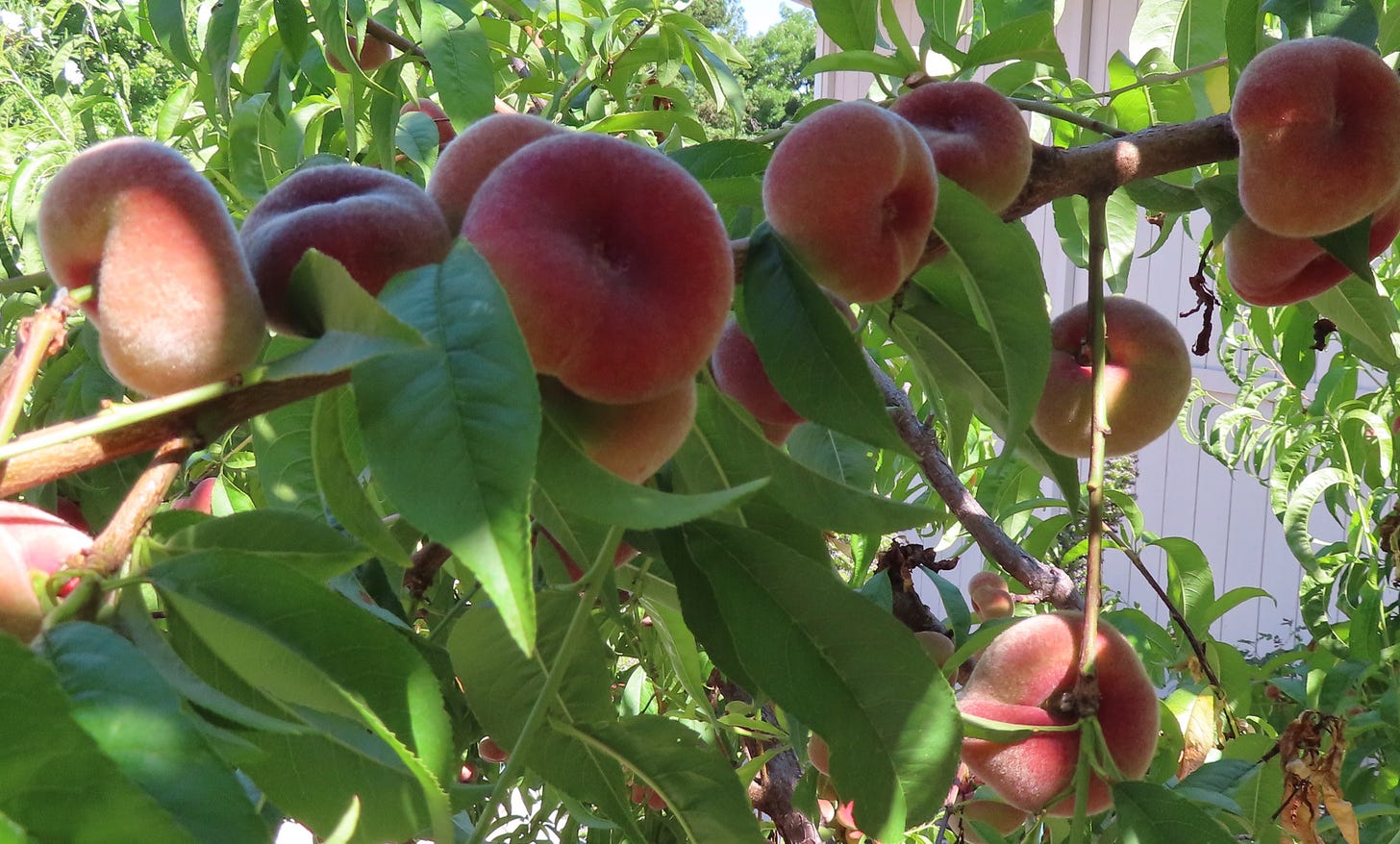
Thinning Crowded Fruit on Fruit Trees, Shrubs and Vines
A prolifically producing peach tree next to an often-used walkway in our narrow side yard serves as a not so-subtle reminder this time of year: thin the fruit before trouble begins. And if a glance up into the canopy of your peach, pear, nectarine, apple, kiwifruit, persimmon, apricot, or other deciduous fruit trees and vines (including table grapes) shows crowded young fruit, take action. Rubbing or tightly packed little fruit in a tree now can lead to big problems in the summer, such as undersized fruit, injured or diseased fruit, excessive fruit drop, and broken fruit tree branches.
Some tips:
• Remove some of the fruit. Space fruit evenly along each branch, with perhaps five inches between each piece of fruit. More importantly, be sure to leave the largest sized fruits on the tree or vine.
• For table grapes, remove grape bunches so that there is at least six inches of space between each remaining bunch of table grapes. Cut off the "tails" from the remaining bunches at that same time. This is the lower one-quarter to one third of the bunch, where it begins to taper down in size. This will send more energy to the remaining grapes on the bunch.
• Because of their small size, cherries are not usually thinned from backyard trees. In addition, nut crops, such as almonds and walnuts, are not thinned.
• For shrub-like fruit bushes, such as blueberries, pruning may not be necessary on older shrubs with thicker branches that can support the weight of the fruit. Younger plants may need thinning if you see the branches bending precariously. And, as you may have noticed, the local bird population may be helping you thin the blueberries. That’s a definite sign that those blueberries are close to being ripe. If the robin population seems to be spending most of their time around your berries, cover the plants with bird netting
The UCANR informational sheet, “Fruit Trees: Thinning Young Fruit” has more deciduous spring fruit thinning advice.
• Citrus trees tend to thin themselves, a phenomenon called “June Drop.” However, citrus fruit thinning now can help that tree produce next fall and winter.
Certain citrus types, such as Valencia oranges and some mandarins, produce heavily one year followed by a year with sparse production. This is called alternate bearing. You can reduce the potential of a tree to alternate bear by reducing the fruit load in a heavy fruit set year by thinning out some of the fruit.
Also, fertilize less in light years and more in heavy fruit production years so that the trees needs are met according to the demands of the fruit load. Despite using these strategies, some varieties will just alternate bear. Do not allow the old citrus fruit to stay on the tree longer than necessary. This may contribute to a smaller crop and perhaps, more fruit drop, for next year’s crop.
More Fruit Thinning Tips
• Here’s a valuable tip from the experts at Louisiana State University: when thinning fruit, keep looking at the tree; don't look at the ground. Seeing all that fallen fruit may dissuade you from the primary task. Cut off the excess fruit. Pick it up when finished pruning. Don’t try to juggle the chores of pruning and catching the fruit in a bucket. You may need both hands free for gently moving one piece of fruit out of the way to prune out the unwanted fruit.
• Snip off, don’t pull off, the fruit. Pulling can damage the branch, inhibiting future production. The best tool to use for thinning is a pair of needle-nose pruners. The long, thin blades can easily get into tight spaces to snip the fruit along its stem.
VEGETABLE THINNING
Planting easy-to-grow vegetables that can get out of hand quickly is a time-honored gardening tradition in the spring. Carrots, corn, cucumbers, eggplant, radishes, summer squash and winter squash all emerge with little effort, but can take over a garden by summer. The problem is: because the emerging plants are small, many gardeners don’t have the heart to thin them out to their proper spacing.
The result is an undersized crop, greater incidence of pests and diseases, or, too much of a good thing. The popular summer squash, zucchini, is a perfect example of the latter. Here are the planting and thinning instructions for zucchini seeds from the Burpee Seeds website:
“Sow one to two seeds about 36 inches apart. Cover with one inch of fine soil. Firm lightly and keep evenly moist. Zucchini seedlings emerge in 10-14 days. Thin to one plant when seedlings have two sets of leaves.”
That seems reasonable. And thrifty.
And certainly clearer than these instructions on the back of a packet of Ferry-Morse zucchini seeds:
Not sure how you leave three seedlings on one 2’x2’ hill, and yet space the plants four feet apart.
Because they have calloused hands but soft hearts, many backyard gardeners will ignore rational spacing instructions, let alone keeping only one plant. And what happens? Overwhelmed gardeners go on midnight runs in August, surreptitiously placing bags of oversized zucchini on neighbors’ front porches.
The bottom line: read and follow all planting instructions. If you can.
Thank you for also listening to the Garden Basics with Farmer Fred podcast! It’s available wherever you get your podcasts. Please share it with your garden friends.
Fred Hoffman is also a University of California Cooperative Extension Master Gardener in Sacramento County. And he likes to ride his bike.




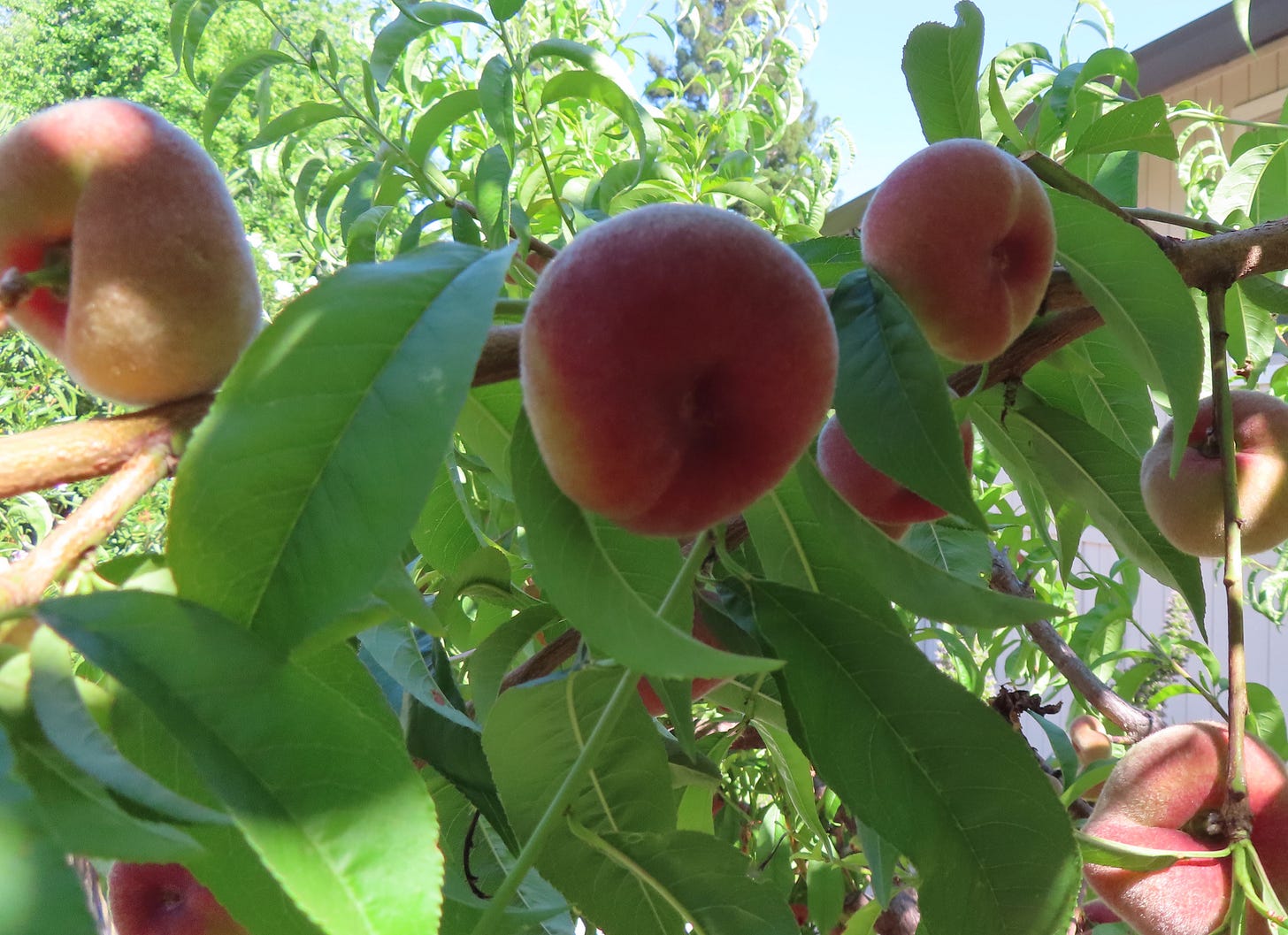

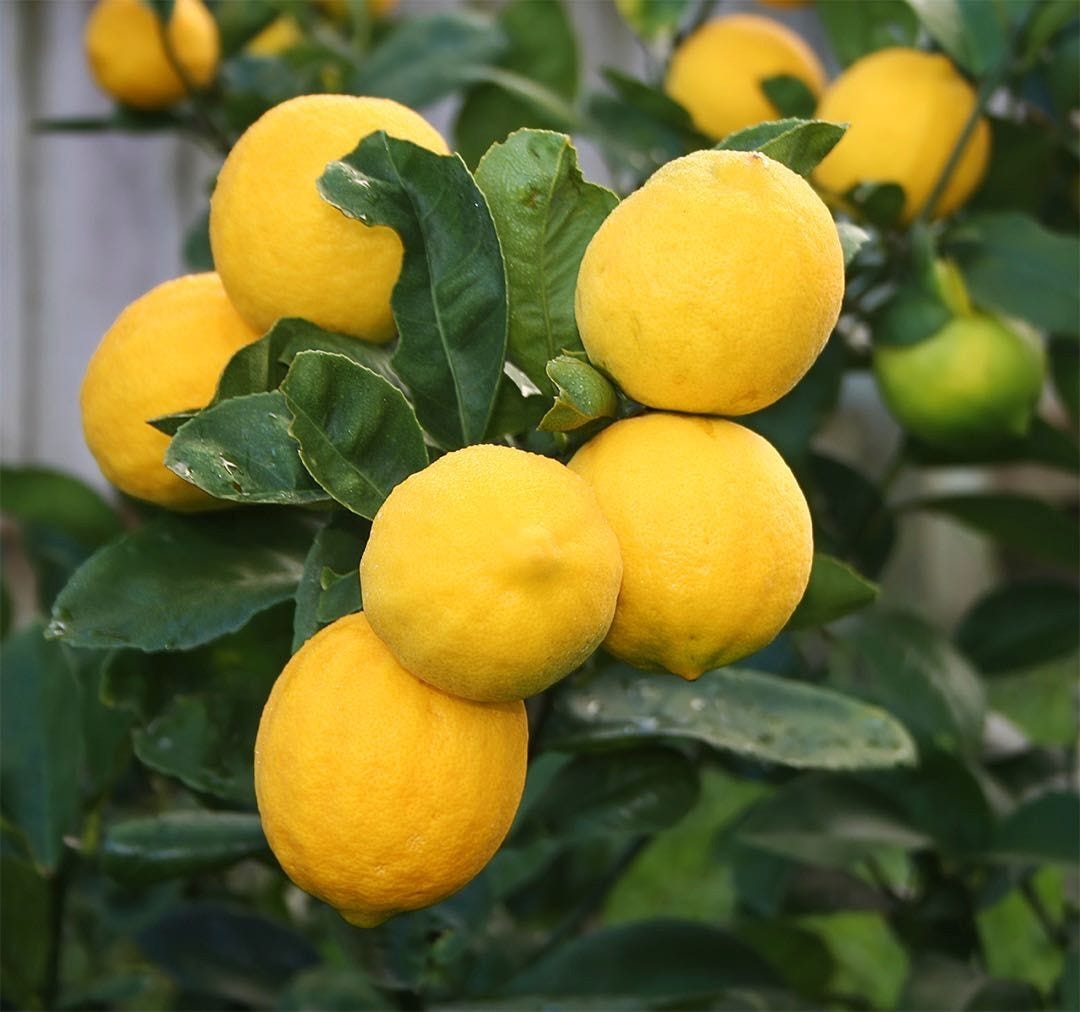



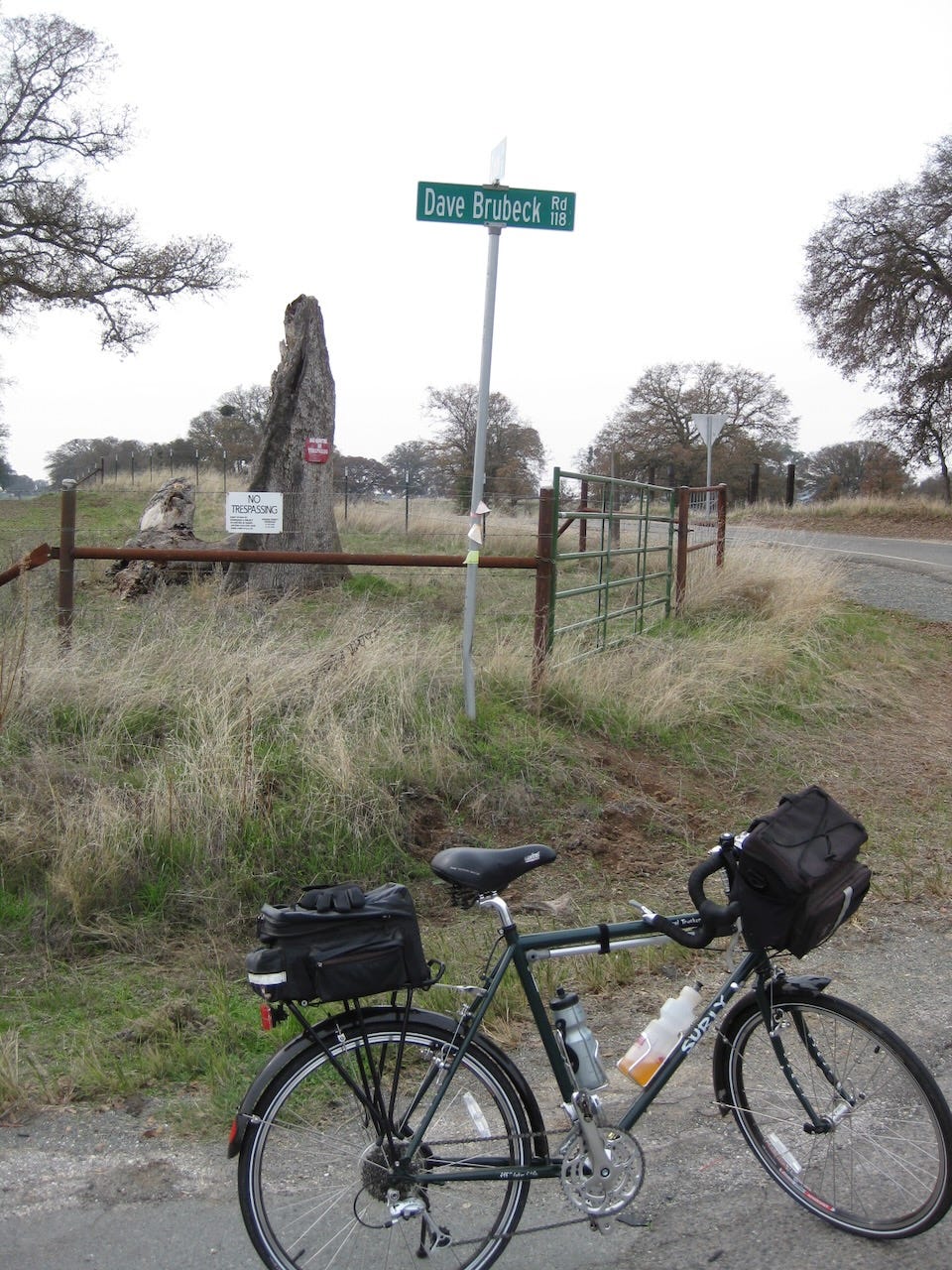


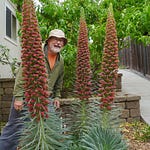

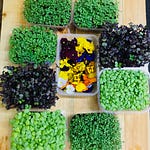
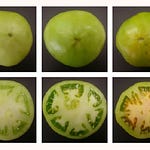

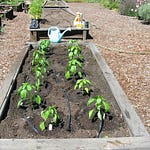
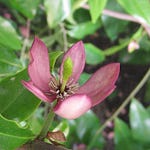
Share this post